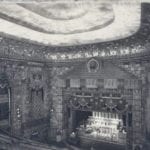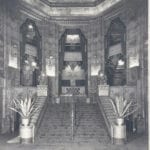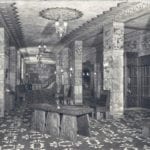fisher theater building theater seat end echoes a most unusual design treatment used in the fisher theater
This entry was posted on August 24 2016 by Eric
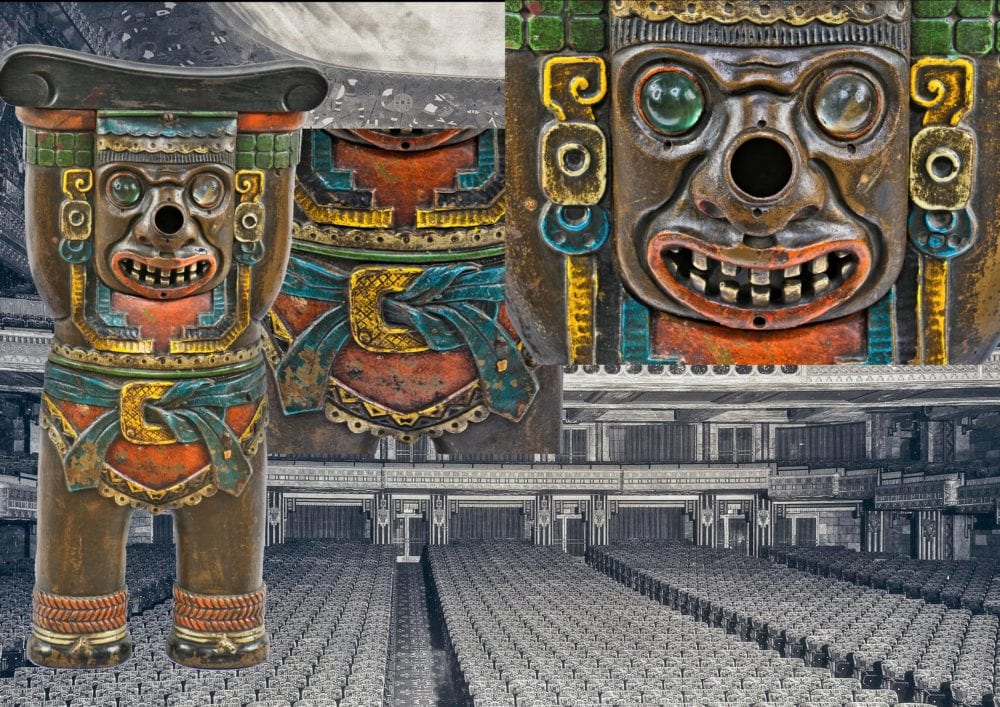
among the non-chicago based artifacts in the bldg. 51 museum collection is a highly unusual depression-era theater seat end, included in the catalog for its reflection of exotic movie palace architecture in the mid-west, and as an object designed for chicago architects anker graven and arthur mayger.
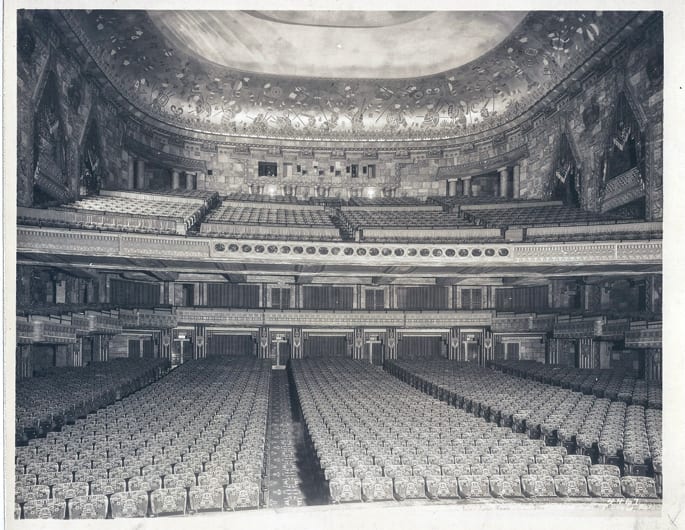
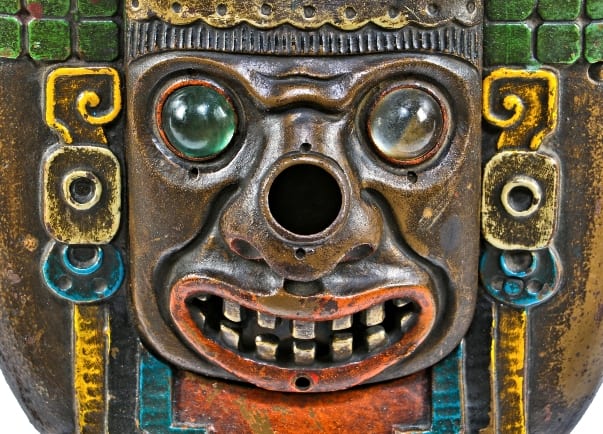
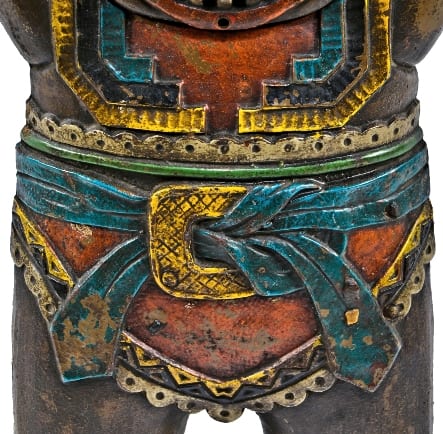
the distinctive polychromatic painted auditorium seat end features a detachable mayan revival figural mask with nose and eyes containing glass "jewels" that were once illuminated from behind. this sort of design element is just one component of the overall thematized decor that permeated the entire grandiose movie palace, made to be a standout area of the already-breathtaking fisher building (the building itself still stands). it was altogether an original theater, unlike any in the country. as a standalone remnant from the fisher’s renovation, this singular seat end gives insight into what thorough effort went toward ensuring even small details were elaborately ornamented, not just utilitarian. the brightly colored remnant brings the few surviving black and white photos of the space to life. in its time of actual usage too, the theater seat ends were not only figural but functional in that they illuminated the auditorium aisles - it was an ingenious way of integrating form and function. manufactured by the heywood-wakefield company, the theater seat represents a departure from usual theater palace themes, while still being squarely within the realm of novelty art deco revival styles and in the vein of atmospheric theaters of the same era. as with egyptian revival, mayan-revival architecture coincided with discoveries of ruins made in different regions and public fascination with ancient civilizations (here drawing on mesoamerican cultures).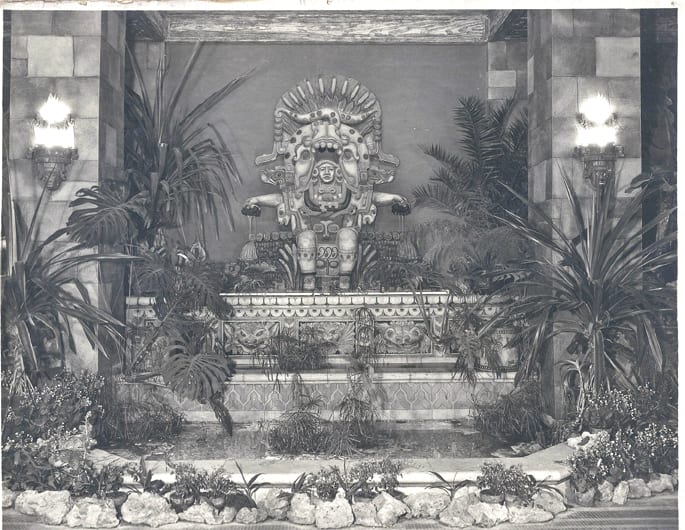
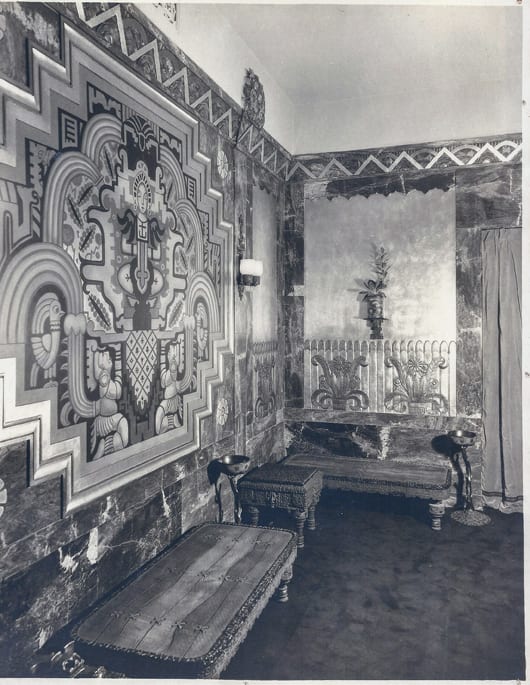
the theater from which this unusual item was salvaged was designed by the firm of graven & mayger, who left rapp & rapp in 1926 to go into business on their own. the fisher theatre was their first commission in competition. it was built to accommodate nearly 3,000 audience members, in an ambient setting complete with a wurlitzer organ, goldfish pond, real banana trees and live macaws.
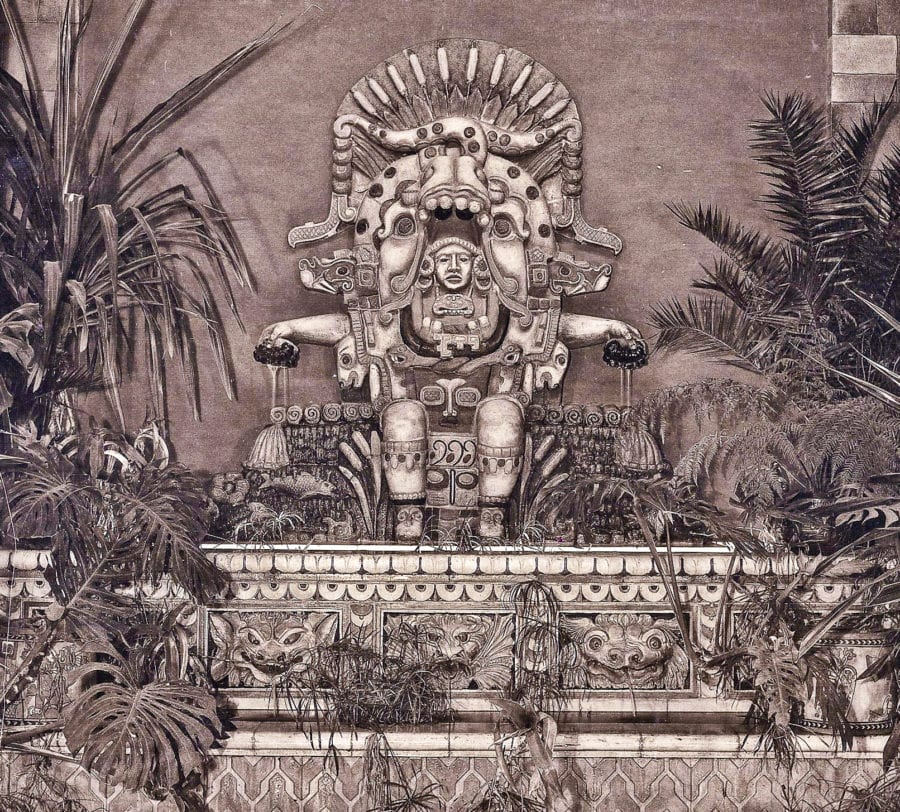
 by the 1950’s the theater had transitioned from live vaudeville shows to being solely a movie house. slowly, the more novel elements were stripped back, and by 1960, the theater was destined to be sold and remodeled. ironically, the firm of rapp & rapp completed its last project in the remodeling, and though the new décor remained lavish, the firm obliterated original ornament, even removing the aztec statues which had once graced the outside. the firm reduced the distinctive mayan-revival style to a mid-century modern design with little shadow of its former self.
by the 1950’s the theater had transitioned from live vaudeville shows to being solely a movie house. slowly, the more novel elements were stripped back, and by 1960, the theater was destined to be sold and remodeled. ironically, the firm of rapp & rapp completed its last project in the remodeling, and though the new décor remained lavish, the firm obliterated original ornament, even removing the aztec statues which had once graced the outside. the firm reduced the distinctive mayan-revival style to a mid-century modern design with little shadow of its former self.
note: any and all scanned black and white images depicting the interior and exterior of the fisher theater and/or the building itself are courtesy of friend and logan square preservation president andrew schneider.
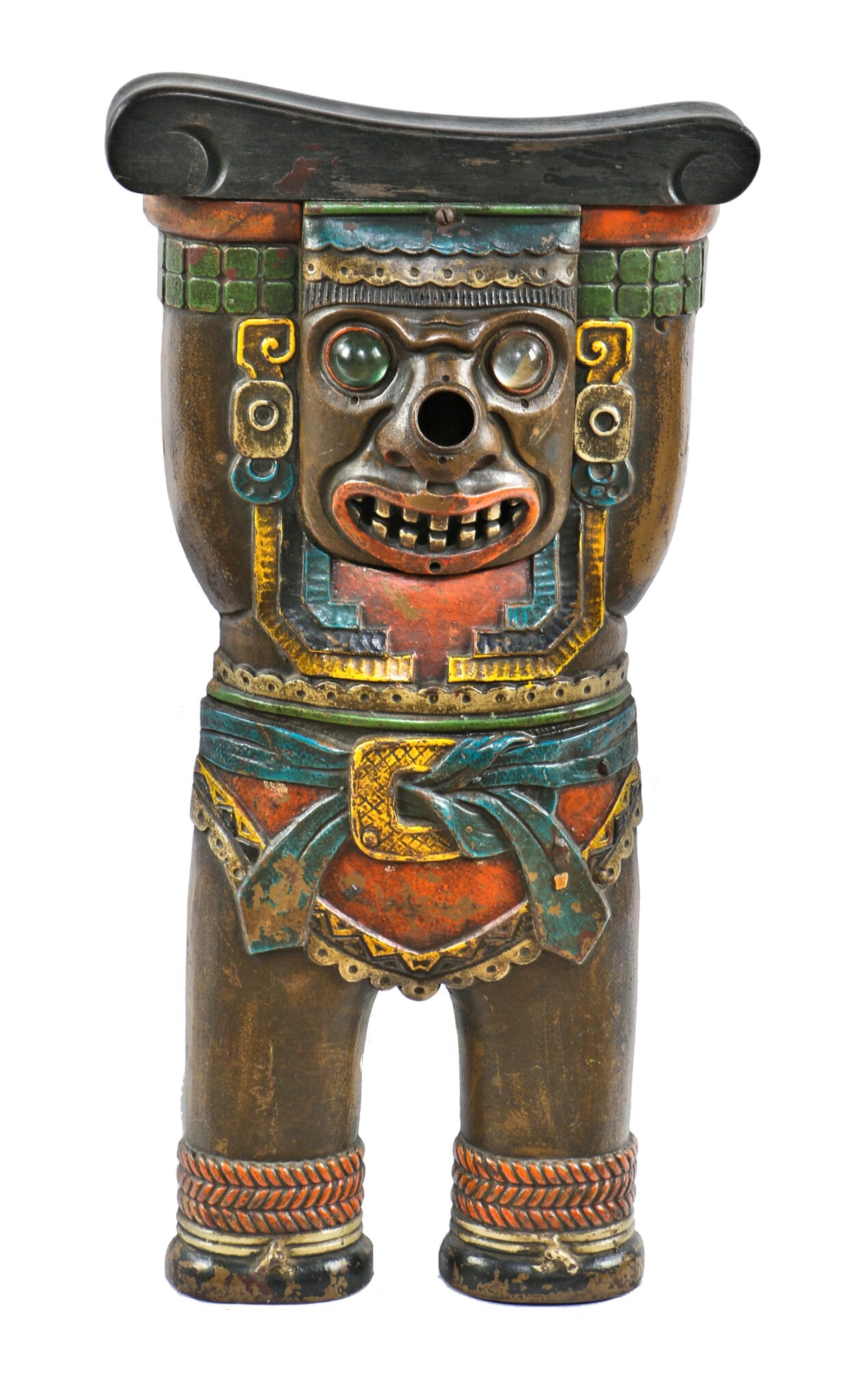
This entry was posted in , Miscellaneous, Bldg. 51, New Products, Events & Announcements, New Acquisitions, Sales and Promotions, Featured Posts & Bldg. 51 Feed on August 24 2016 by Eric
WORDLWIDE SHIPPING
If required, please contact an Urban Remains sales associate.
NEW PRODUCTS DAILY
Check back daily as we are constantly adding new products.
PREMIUM SUPPORT
We're here to help answer any question. Contact us anytime!
SALES & PROMOTIONS
Join our newsletter to get the latest information

